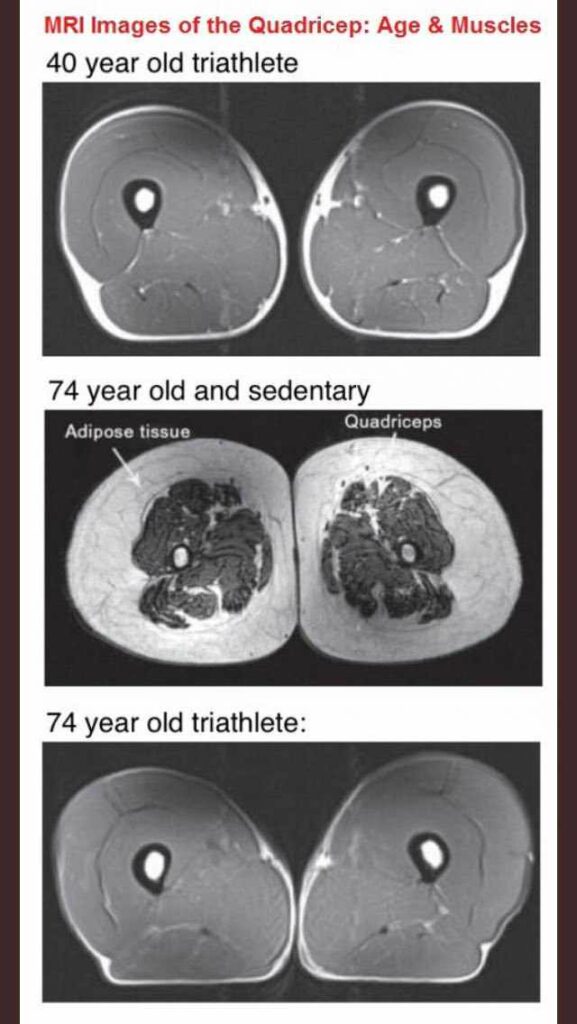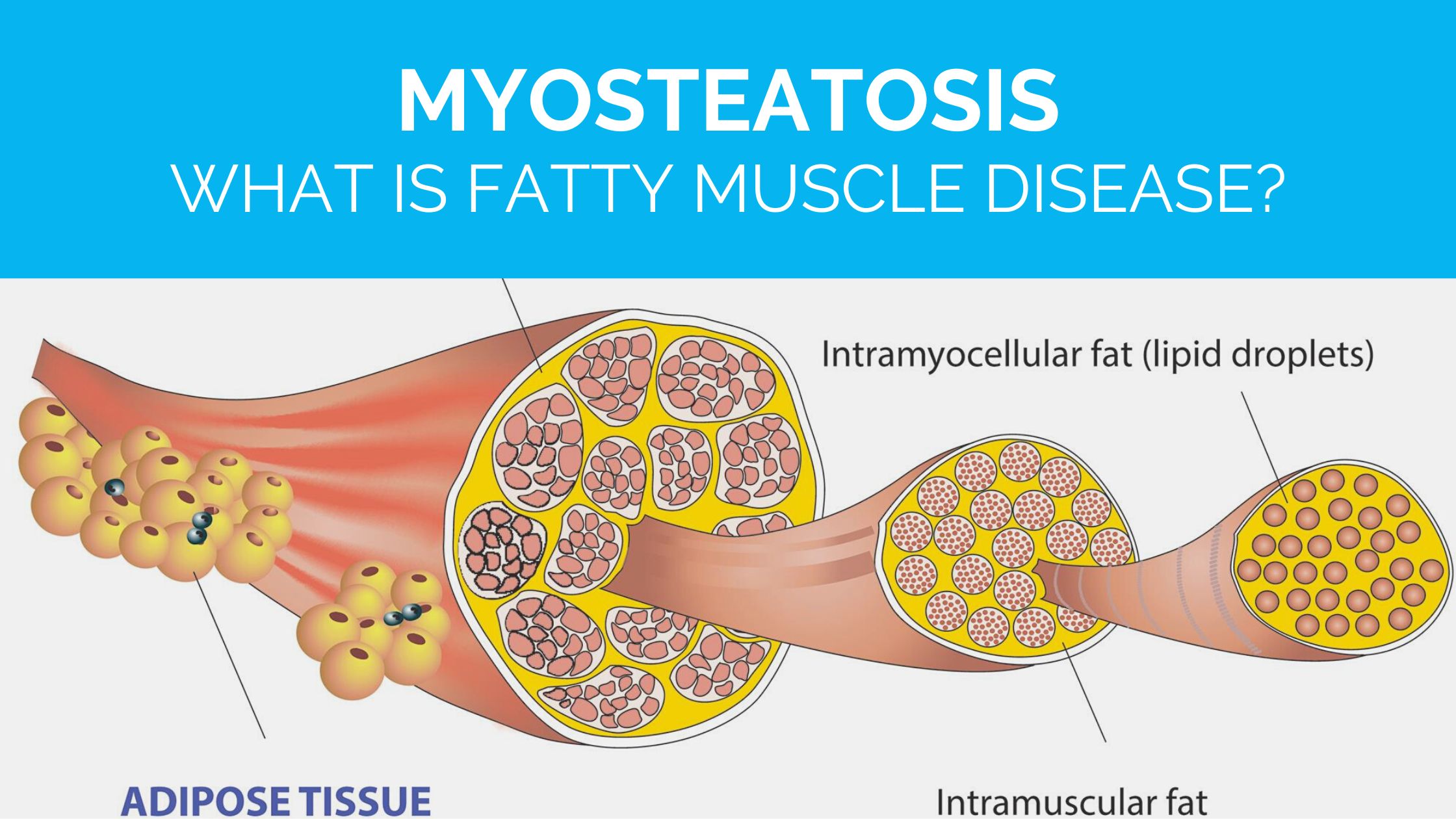Many of you have heard of “fatty liver,” or Hepatic Steatosis. If your liver scans came back with this result 30 years ago, your doctor’s mind would have gone straight to alcohol abuse. But in recent years, Non-Alcoholic Fatty Liver Disease (NAFLD) bas been on the rise, even in children! The reasons for this are heavily related to the rising increase in ultra-processed and sugar-laden junk food. But today we’re going to talk about NAFLD’s close cousin, Myosteatosis – or what is more simply termed Fatty Muscle Disease.
What is “fatty muscle” disease, or myosteatosis?
An admittedly simplistic way to understand both fatty muscle and fatty liver is that the body has simply run out of room to store excess calories. While the underlying mechanisms are much more complex than that, the basic reality is that if you consume a surplus of calories for long enough, you’ll eventually max out your fat storage capacity, and the body may start storing fat where it doesn’t belong – around your organs, and inside your muscles!
Things get even worse with disuse atrophy, or sarcopenia. When a muscle becomes detrained, the loss of lean muscle can be accompanied by the deposition of fat in the muscle. As we spend years in sedentary, comfortable lives, the strongest muscles in our bodies slowly get broken down because of a lack of challenging stress. Our bodies are smart, and won’t maintain expense muscle tissue that doesn’t serve any function. But if we are eating extra processed calories at the same time, this loss of muscle can be hard to notice. The muscles don’t simply shrink – they can actually remain the same size because the lost muscle fibers are simply replaced with fatty deposits.
My muscles look similar, but I’m a little weaker. Is that really a problem?

You bet it is. Beyond the problem of getting weaker, fatty muscle and fatty liver are strongly correlated with each other, and with the development of diabetes. It’s very unlikely to have perfectly healthy organs when your muscle is slowly being replaced with fat. it’s obvious that fatty muscle and fatty liver are both strongly correlated with metabolic and cardiovascular disease. But having myosteatosis also means you are likely to have much worse outcomes if you are diagnosed with cirrhosis, intestinal cancer, gastric cancer. The quality of your muscle may be even more important than the quantity for determining how long you will live.
Plainly put, if you want to live a long healthy life, you don’t want any fat where it doesn’t belong. Fat storage inside the muscles and around the organs is sign that the body has “aged” in the worst way, as the key systems of energy storage and physical function are breaking down. This sign of “metabolic age” is associated with systemic inflammation and all of the attending negative consequences of aging. Myosteatosis is such a strong indicator of systemic breakdown that it is even associated with more severe outcomes from viral infections like Covid-19.
Instead, we want to keep as much healthy muscle as our frame will allow. And we’re not talking about body-builder sized biceps here. We’re just talking about the muscle mass we would have carried as a very physically active young adult. Keeping our muscles strong and free of fat is crucial if we want to increase our longevity.
The good news – with training you might be getting stronger from the inside out!
There’s a silver lining to this. Resistance training prevents fat accumulation in muscle! I have many clients who have trained consistently with me for years, but don’t always see a large visible change in their muscle mass. But what they have done is gotten a lot stronger. And, perhaps most impressively, the STAY strong, even through their 60’s, 70’s, and 80’s! My oldest client is 84, and is still much stronger than he was at 82, when he started. This is a very common finding among older adults, where studies show that resistance training improves muscle quality and strength, even if changes in total muscle size aren’t significant.
Getting stronger is associated with beneficial changes in muscle quality. And so what is likely happening is that these clients who got stronger but not bigger may have been replacing the fatty deposits inside their muscle tissue with lean muscle again. Even if they didn’t add inches to their arms, the health benefits of having high muscle quality (and thus avoiding myosteatosis) can’t be overstated.

Training with a high degree of effort is the key to preventing myosteatosis.
But there is a catch. We can’t just take it easy in the gym. Exercising with a high effort is necessary. One study that looked at exercise intensity concluded that the group lifting weights with a low intensity of effort didn’t see meaningful increases in muscle quality, which the trainees who were working at moderate to higher intensities did! This is why we push our clients to high efforts at our personal training studio in Chesapeake, VA – to ensure we are getting ALL the benefits of strength training.
Conclusion: Resistance Training is what is necessary to prevent fatty muscle.
This is where we want to be for healthy aging – with a little subcutaneous fat to give our figure and face a healthy appearance, but for little to no fat infiltrating our livers and muscles. And while a healthy diet is probably most important factor for preventing a long-term surplus of stored fat, strength training is the highest leverage (best bang for your buck) habit you can adopt to improve the density, strength, and composition of your muscles.

